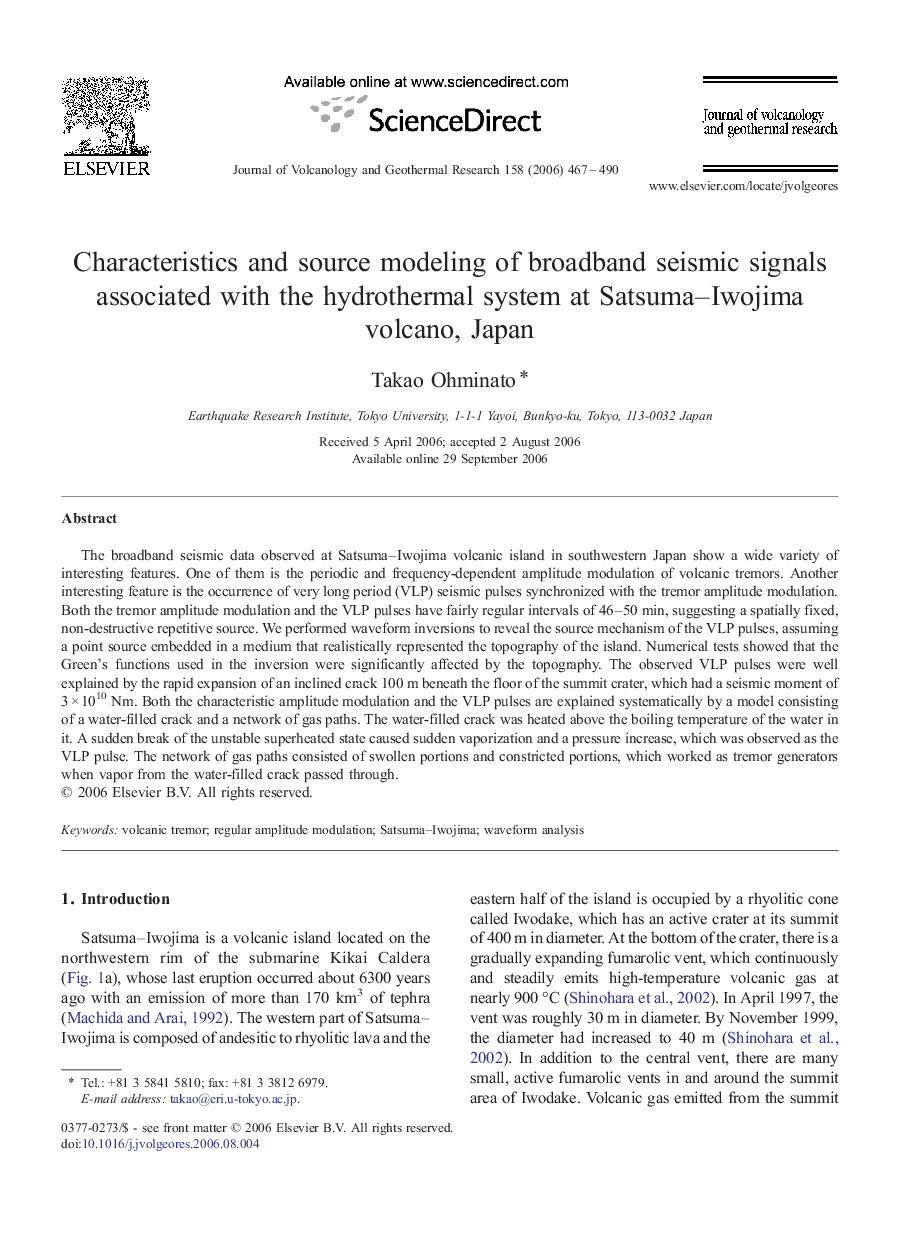| Article ID | Journal | Published Year | Pages | File Type |
|---|---|---|---|---|
| 4715017 | Journal of Volcanology and Geothermal Research | 2006 | 24 Pages |
The broadband seismic data observed at Satsuma–Iwojima volcanic island in southwestern Japan show a wide variety of interesting features. One of them is the periodic and frequency-dependent amplitude modulation of volcanic tremors. Another interesting feature is the occurrence of very long period (VLP) seismic pulses synchronized with the tremor amplitude modulation. Both the tremor amplitude modulation and the VLP pulses have fairly regular intervals of 46–50 min, suggesting a spatially fixed, non-destructive repetitive source. We performed waveform inversions to reveal the source mechanism of the VLP pulses, assuming a point source embedded in a medium that realistically represented the topography of the island. Numerical tests showed that the Green's functions used in the inversion were significantly affected by the topography. The observed VLP pulses were well explained by the rapid expansion of an inclined crack 100 m beneath the floor of the summit crater, which had a seismic moment of 3 × 1010 Nm. Both the characteristic amplitude modulation and the VLP pulses are explained systematically by a model consisting of a water-filled crack and a network of gas paths. The water-filled crack was heated above the boiling temperature of the water in it. A sudden break of the unstable superheated state caused sudden vaporization and a pressure increase, which was observed as the VLP pulse. The network of gas paths consisted of swollen portions and constricted portions, which worked as tremor generators when vapor from the water-filled crack passed through.
